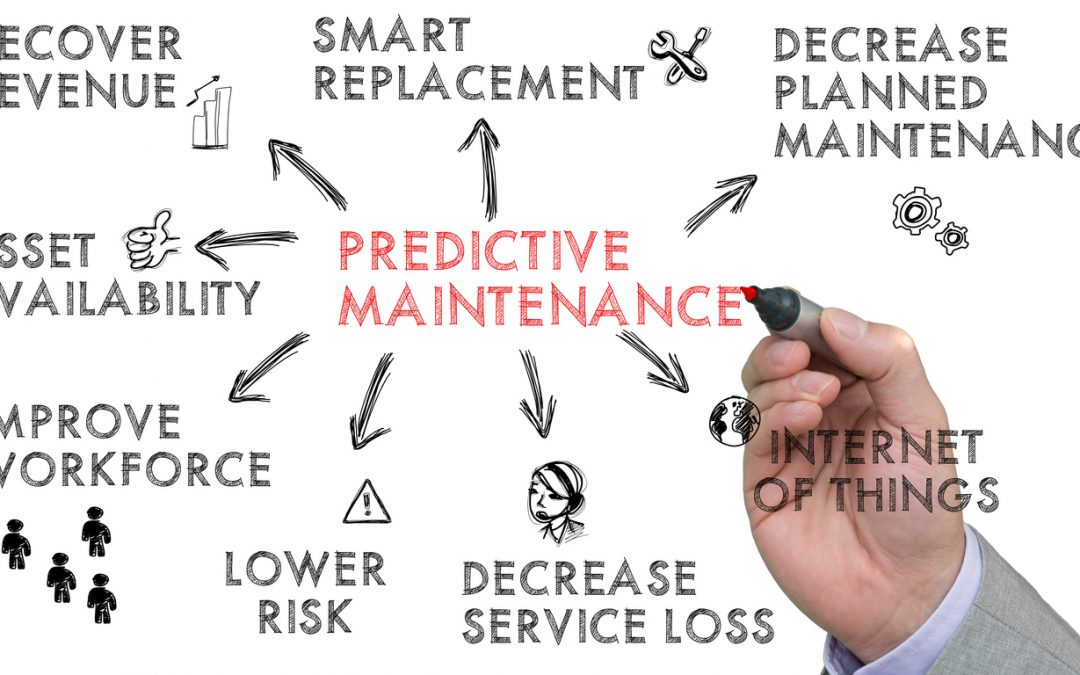Predictive maintenance is a method of maintaining equipment through the ongoing monitoring of its performance, with an emphasis on completing repairs precisely when they’re needed as opposed to addressing them only during equipment failures or pre-scheduled tune-ups. This is possible through the use of sensors and extensive performance tracking through software for each individual component of a piece of equipment. When compared to other popular maintenance techniques, such as preventative maintenance, predictive maintenance offers several benefits other methods can’t compete with. Here are a few ways predictive maintenance can help your business.
Reduced Labor Costs
Equipment repairs make up a large part of the budget for many businesses. If such costs could be reduced even by a seemingly small amount, the savings on maintenance-related labor could create lots of financial opportunities for growth. Utilizing predictive maintenance eliminates unnecessary visits to your business by expensive technicians who previously would have performed lengthy inspections for problems that may not have actually existed. Because routine check-ups aren’t a part of the predictive maintenance philosophy, technicians will only be called when they have a specific job to do, leading to decreased maintenance expenditures over time.
Eliminate Critical Failures
Small fixes on equipment here and there won’t affect your business negatively, but critical failures can lead to dire circumstances. Those who use a maintenance strategy of waiting for equipment to break down completely before addressing performance issues are making a serious mistake, as critical failures can be prevented with a little bit of foresight. Predictive maintenance is designed to instantly identify problems with equipment in real-time, and then recommend what action you as a business owner should take to remedy the issues, which removes the guesswork from your maintenance processes.
Improve Safety
Equipment safety is critical to the well-being of your employees. It’s been estimated that over $50 billion is spent by employers on costs related to workplace injuries each year in the United States. Sudden and unexpected equipment failures are responsible for a large part of the millions of workplace injuries that occur each year, and predictive maintenance methods are great at reducing such incidents.
Prevent Costly Downtime
The expense of equipment failures doesn’t only apply to the costs for parts and labor. Equipment that’s out of working order will halt various processes your business relies on to remain productive and make a profit. Downtime is predictable when your business uses predictive maintenance methods, meaning any necessary repairs can be completed when the day-to-day processes of your business will be least affected. If technicians are able to work on your equipment during times when they’re not normally being used, such as when your business is closed, you could potentially eliminate downtime completely with the help of predictive maintenance.
Embracing the Future of Maintenance
The popularity of predictive maintenance techniques only continues to rise. The costs of the technology required to perform predictive analysis on equipment, such as sensors and data tracking software, are going down every year, while the efficiency of such technology only improves with time. By choosing a predictive maintenance philosophy for your business, you’re embracing the future of equipment maintenance and ensuring your business won’t fall behind as the inevitable expansion of predictive technologies takes place.
These are just a few of the many great ways predictive maintenance can keep your equipment running efficiently. By reducing labor costs, improving safety, preventing critical failures and downtime and setting your maintenance processes up for future success, predictive maintenance can help your business flourish.
How to start with Predictive Maintenance
Predictive Maintenance starts with digital data collection. Once an organization has a decent amount of data, algorithms for predictive maintenance can be set up. It is important to start the digital data collection right away to prepare for the future. Organizations that already have their data digitally, will out perform their competition in the future.
Let's start the conversation
Asset Metrics Hub reduces the demand for PM Labor by automating preventive and corrective tasks using data from your machines.

